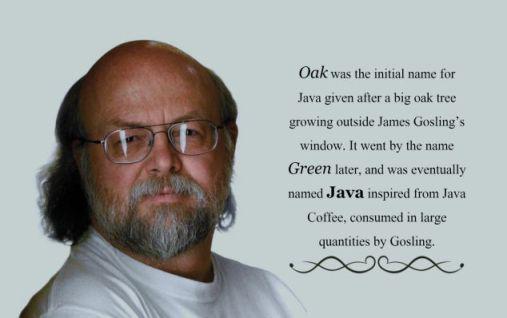Define Java

James Gosling
Java is a high-level, object-oriented programming language developed by James Gosling at "Sun Microsystems" (which is now a subsidiary of Oracle Corporation) in the USA and released in June 1995. Java was designed for the development of the software in various consumer electronic devices such as set-top boxes, toasters, microwave ovens, remote controls, and other such electronic machines. The main objective of Java is to build platform-independent programs.
Features of Java
- Simple: Java is designed to be easy to learn. The syntax of Java has been kept nearer to the C language so that the usage of Java does not require extensive training programs to be undertaken.
- Object Oriented: Java is a pure object-oriented language. It uses the object-oriented concept for software design.
- Robust: Robust simply means strong. Java uses strong memory management. There is a lack of pointers that avoid security problems. There is an automatic garbage collection in Java. There is an exception handling and type checking mechanism in Java. All these points make Java robust.
- Secure: Java is designed to be used in networking and distributed environments where security is very important. Hence, Java is designed to be virus-free, tamper-free, and secure.
- Portable: Java programs can be easily moved from one computer system to another. The Java compiler generates bytecode instructions that are not dependent upon particular computer architecture. Thus, the Java programs are the same on any platform.
- Multi-Threading: Multi-threading means handling multiple tasks simultaneously. Java supports multi-threaded programs, which means that we need not wait for the application to finish one task before beginning another.
- Platform Independent: The concept of write once, run anywhere is known as platform independent. It is one of the important key features of the Java language that makes Java the most powerful language. The programs written on one platform can run on a different CPU and on different operating system architectures but must have a JVM.
- Dynamic: Java is a dynamic language. Java is capable of dynamically linking in new class libraries, methods, and objects.
- Compiled and Interpreted: Usually a computer language is compiled or interpreted. Java combines both these approaches, first the Java compiler translates source code into bytecode instructions. In the second stage, the Java interpreter converts bytecode into machine code that can be executed by the machine that is running the Java program. Thus, we can say that Java is both compiled and interpreted.
- JDBC RowSet: Java supports JDBC RowSet to send data in a tabular format between the remote components of a distributed enterprise application.
Ad:

